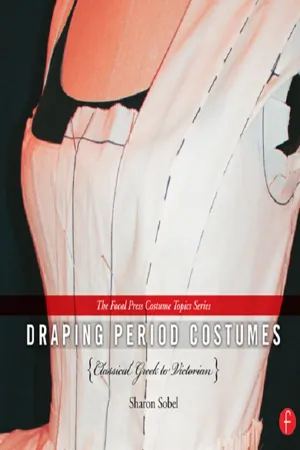
Draping Period Costumes: Classical Greek to Victorian
(The Focal Press Costume Topics Series)
- 192 pages
- English
- ePUB (mobile friendly)
- Available on iOS & Android
Draping Period Costumes: Classical Greek to Victorian
(The Focal Press Costume Topics Series)
About This Book
One way of creating a theatrical costume is called flat patterning. This is when a costume designer uses a pattern made to the wearer's measurements to cut out and sew together a costume. In many cases flat patterning is the more appropriate method for creating a period costume - skirts, pants, and sleeves, for example. However, working in two-dimensions often does not translate correctly onto a three-dimensional dress form or person. Often a designer will need to tweak style lines on a garment once they see it worn, or a costume will need a quick adjustment right before going on stage. In those cases, designers need to know how to correctly drape a costume. Draping is also the best way to construct a period costume right from the start. The construction of garments in earlier centuries often constricted movement, especially in the area of the armhole. The very different size and proportions of contemporary people compared to those in previous centuries makes the use of period patterns difficult. A well-draped garment can give the impression of period accuracy while permitting the wearer greater freedom of movement. Having a mock-up pinned to the form in its early stages is quicker and easier to adapt than drafting a flat pattern, cutting it out of muslin and sewing it. It also provides the opportunity for greater creativity and adaptation as well as a better understanding of what fabric will and won't do.
In Draping Period Costumes, Sharon Sobel explains in step-by-step detail the basics of draping and demonstrates the use of those basic skills in the creation of a representative selection of period costumes from a variety of time periods. Chapters are broken into time periods and have two parts: an analysis of how clothing was made and worn during that specific time period, and detailed instruction on draping techniques to construct the costume. Copiously illustrated, images allow this visual audience to easily follow along with detailed instructions.
A part of the Costume Topics series, this book will be 256 pages, a snazzy 8.25 x 7.5 trim size, and spiral bound-a format consistently requested by our audience so that they can lay the book flat while working from it.
Frequently asked questions
Information
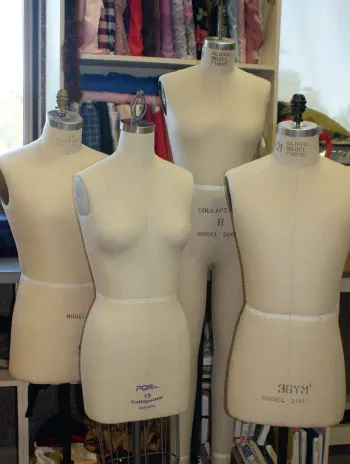
- Shoulders across front
- Halfway down armscye across front (sometimes called “front width”)
- (Women only) Center of shoulder seam to bust point
- (Women only) Bust point to waist
- (Women only) Bust point to bust point

- Base of neck
- Center front (CF) of neck to waist
- (Men only) Center of shoulder seam to waist front
- Around chest
- Around waist
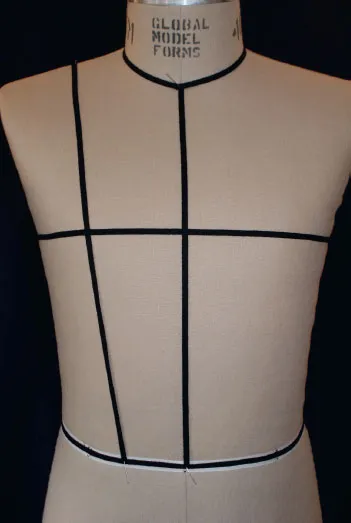
- Shoulders across back
- Halfway down armscye across back (sometimes called “back width”)
- Center back (CB) of neck to waist
- Center of shoulder seam to waist back
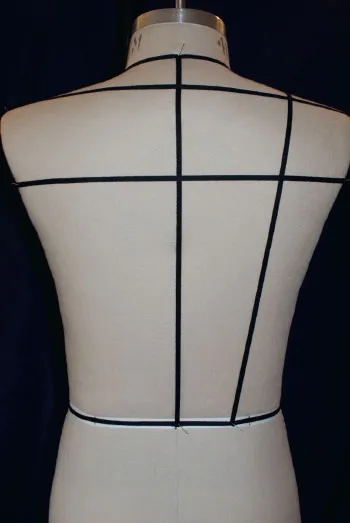
- (Women only) Around underbust
- Around hips (widest part)
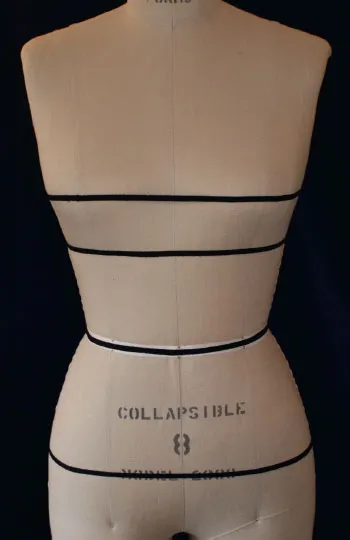
- Shoulder seam (side of neckline to top of armscye)
- Armscye
- Underarm to waist (side seam)
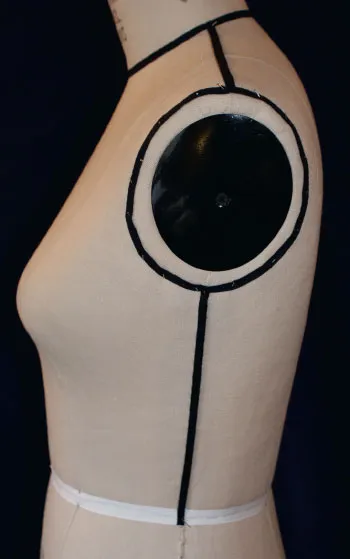


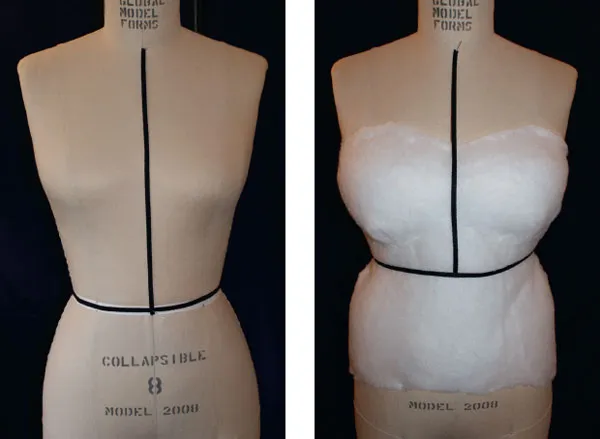
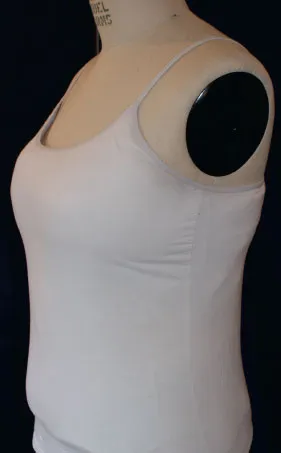
- Be good to your dress form and it will be good to you.
- Your dress form is not a pin cushion. Do not leave pins in it when not in use. Use only dressmaking pins when draping; T-pins, safety pins, and push pins put undue wear and tear on the canvas cover. Try not to put more than one pin into the dress form at any one point; this will also weaken the fibers of the canvas cover.
- Use marking tools such as a #2 graphite pencil or a designer pencil. Felttip markers and some ballpoint pens will bleed through.
- Draping fabric
- Dressmaker shears
- Straight pins
- #2 or designer pencil
- Tailor tape or seam binding
- Clear, two-inch-wide “C-thru” ruler (marked in inches, not pica)
- Armhole curve or large French drafting curve
- Push pins
- Paper scissors (not sewing scissors)
- Brown craft paper
- Pounce wheel
- Cutting table (waist high with a cork or vinyl-covered Homasote top)
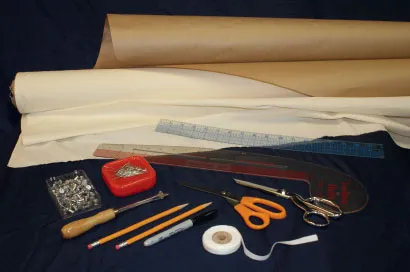
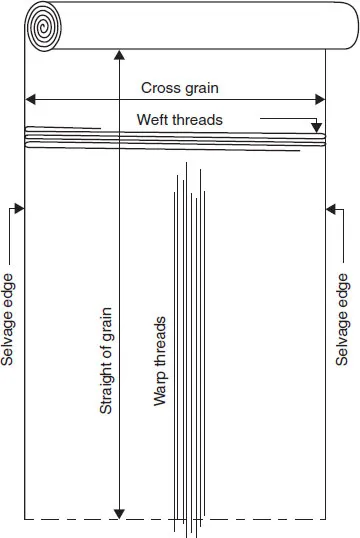
Table of contents
- Cover
- Half Title
- Title Page
- Copyright
- Dedication
- Contents
- Acknowledgments
- Introduction
- Chapter 1: Getting Started
- Chapter 2: Early, Unstructured Garments
- Chapter 3: Cut and Shaped to Fit: The Gothic Period
- Chapter 4: The Height of Artificial Silhouette
- Chapter 5: The Men Return to Softness…
- Chapter 6: . . . While the Women Remain Tightly Corseted
- Chapter 7: Introduction of Tailoring to the Man’s Costume
- Chapter 8: Variety of Silhouette in Eighteenth-Century Women’s Costumes
- Chapter 9: Neoclassical Elegance
- Chapter 10: Revolutionary Menswear
- Chapter 11: Romantic Womenswear
- Chapter 12: The Victorian Gentleman
- Chapter 13: The Victorian Lady
- Index